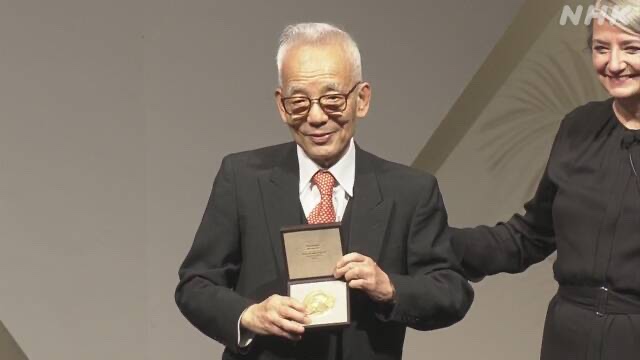
ノーベル賞:少人数が突然発表する傾向が強い(動画): Scientometrics
Nobel Prize: Small numbers tend to announce suddenly: Scientometrics:
诺贝尔奖:小数字往往会突然宣布:科学计量学
ー筑波大の研究、半世紀の論文を調査ー
筑波大学
研究グループ1月21日、
- ノーベル賞級の萌芽的トピックは、
- 過去の業績に関係なく、
- 少人数グループが突然発表する傾向が強いことが明らかになった。
ノーベル賞級のトピック:
研究グループでは、
特に生命科学や医学の分野で、
「トピックの原動力になるもの」について数量的に解析した。
トピックが社会にインパクト:
新たな研究トピックが萌芽することで、
その研究トピックが発展して、技術的なインパクトを社会に引き起こす。
過去半世紀の論文を調査:
これまで過去半世紀に出版された全論文を対象として調査を実施。
「ノーベル賞級のトピックは、他のトピックと比較して異なる傾向」が見られていた。
他のトピックとは異なる傾向:
その原動力となるものについて、
萌芽的トピック創出前後5年間に着目して、より詳細な解析を行った。
ノーベル賞級のトピック:
その結果、
ノーベル賞級トピックの場合、ごく少人数のグループが、
「事前の論文発表を介さず発表される傾向が強いこと」が明らかになった。
この結果から分かること:
ノーベル賞級の研究成果を創出するには、
「過去の業績を評価指標として用いるのは有効でないこと」が示唆されている。
2000年以降の傾向:
「別の研究グループが萌芽したトピックに参入することが少ないこと」が挙げられる。
つまり、
「一度萌芽したトピックを、同じ研究者が継続的に研究する傾向」が顕著になった。
生命科学や医学分野:
生命科学や医学分野では、莫大な資金が必要となる。
今回の調査結果は、投資対効果を考えるうえで極めて重要。
今回の研究成果:
20日付の「Scientometrics」誌のオンライン版に掲載されている。
財経新聞
https://www.zaikei.co.jp/article/20220123/657068.html
ノーベル賞の受賞:特定の科学分野ばかり
ー114の科学分野のうち5分野に集中ー
スタンフォード大学:
アメリカのスタンフォード大学が、
ノーベル賞受賞の研究には分野による偏りがあったとする研究を発表した。
研究チームは、1995年から2017年の間に発表された6,300万本の論文を分析した。
物理学や生物学など各分野で色分けしてマッピングした。
その結果
受賞したのは114の科学分野のうち
「素粒子物理学(14%)」
「細胞生物学(12.1%)」
「原子物理学(10.9%)」
「神経科学(10.1%)」「分子化学(5.3%)」に集中している。
これらがノーベル賞の受賞の52.4%という半分以上を占めていたとしている。
結論としては、ノーベル賞をもたらす研究は、少数の科学分野に集中しているとしている。
財経新聞
https://www.zaikei.co.jp/article/20200805/579416.html
ノーベル賞の研究はいかに創出されるか
~萌芽的科学技術の創出プロセスを計量学的に解明~
https://www.tsukuba.ac.jp/journal/images/pdf/191018ohniwa-1.pdf
Generating process of emerging topics in the life sciences
Abstract
Clarifying the mechanism of how emerging topics in science and technology research fields
are generated is useful for both researchers and agencies to identify potential emerging topics of the future.
In the present study,
we use bibliometric analyses targeting data of about 30 million published articles from 1970 to 2017 on PubMed,the largest article database in the life science field, to test our hypothesis that existing emerging topics contribute to the generation of new emerging topics in that field.
We first collected emerging keywords from medical subject headings
attached to each article using our previously reported methodology (Ohniwa et al. in Scientometrics 85(1):111–127, 2010, https://doi.org/10.1007/s11192-010-0252-2),
and performed co-word analyses of each emerging keyword 1-year prior to it becoming an emerging keyword.
About 75% of total emerging keywords, at 1-year prior to becoming identified as emerging,
co-appeared with other emerging keywords in the same article.
Furthermore,
most of the keywords co-appeared again at the point when the target keyword was identified as emerging,which is consistent with our hypothesis regarding the mechanism that emerging topics generate emerging topics.